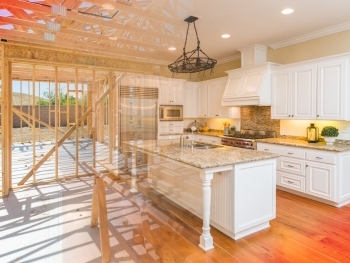Renovation and remodeling are terms often used interchangeably, but they represent distinct processes in the realm of home improvement. Whether you're looking to spruce up your living space or undertake a major overhaul, understanding the disparity between renovation and remodeling is crucial in making informed decisions for your home. In this article, we'll delve into the definitions, objectives, and considerations associated with renovation and remodeling to help you determine which approach best suits your needs.
Defining Renovation: Renovation involves making improvements to an existing structure without altering its fundamental layout or structure. It typically focuses on restoring or updating certain aspects of a property to enhance its aesthetic appeal, functionality, or efficiency. Renovation projects can range from minor cosmetic changes like painting walls or replacing flooring to more extensive upgrades such as installing new fixtures, updating electrical wiring, or replacing outdated appliances. The primary goal of renovation is to rejuvenate the appearance and functionality of a space while retaining its original character and layout.
Key Characteristics of Renovation:
- Preservation of Existing Structure: Unlike remodeling, renovation aims to preserve the existing structure of a property rather than making significant structural changes. Renovation projects typically involve working within the confines of the existing floor plan and architectural features.
- Cosmetic Enhancements: Renovation often focuses on cosmetic improvements such as painting, refinishing surfaces, or replacing outdated finishes to refresh the appearance of a space.
- Cost-Effective: Renovation projects tend to be more cost-effective than remodeling since they typically involve less extensive construction work and fewer structural changes.
Examples of Renovation Projects:
- Upgrading kitchen countertops and cabinets
- Refinishing hardwood floors
- Installing new light fixtures or faucets
- Repainting walls and ceilings
- Replacing worn-out carpeting or tiles
Understanding Remodeling: Remodeling, on the other hand, entails making significant alterations to the structure, layout, or design of a property. Unlike renovation, which focuses on cosmetic enhancements and minor updates, remodeling involves reconfiguring the existing space to better suit the homeowner's preferences or lifestyle. Remodeling projects often involve structural modifications, such as removing walls, adding new rooms, or altering the floor plan to create a more functional or spacious living environment.
Key Characteristics of Remodeling:
- Structural Changes: Remodeling projects typically involve altering the layout or structure of a property, which may require demolition, construction, or adding new structural elements.
- Customization: Remodeling offers homeowners the opportunity to customize their living space according to their specific needs, preferences, and lifestyle requirements.
- Increased Property Value: Since remodeling projects often result in significant improvements to the functionality, layout, and aesthetics of a property, they can significantly increase its resale value.
Examples of Remodeling Projects:
- Knocking down walls to create an open-concept living space
- Adding a new room or expanding an existing one
- Installing a custom-built kitchen island or cabinetry
- Converting a basement into a home theater or guest suite
- Reconfiguring the floor plan to improve traffic flow and usability
Choosing Between Renovation and Remodeling: When deciding between renovation and remodeling, several factors should be considered, including:
- Scope of Work: Assess the extent of changes you wish to make to your home. If you're looking to make minor updates or cosmetic enhancements, renovation may suffice. However, if you desire significant alterations to the layout or structure of your property, remodeling may be necessary.
- Budget: Consider your budgetary constraints and the cost implications of each approach. Renovation projects are typically more budget-friendly than remodeling, which involves more extensive construction work and may require hiring architects, engineers, and contractors.
- Timeline: Evaluate the timeframe for completing the project. Renovation projects often have shorter turnaround times since they involve less complex construction work. In contrast, remodeling projects may take longer to complete, especially if structural changes are involved.
- Long-Term Goals: Consider your long-term goals for the property. If you plan to stay in the home for many years and want to tailor it to your specific needs and preferences, remodeling may be the better option. However, if you're looking to refresh the appearance or address minor issues, renovation may suffice.
Renovation and remodeling offer homeowners distinct approaches to improving their living spaces, each with its own set of benefits and considerations. Whether you opt for renovation to refresh the appearance of your home or embark on a remodeling project to customize your living space, understanding the differences between the two can help you make informed decisions that align with your needs, budget, and long-term goals. By carefully assessing the scope of work, budgetary constraints, and desired outcomes, you can choose the approach that best suits your unique requirements and transforms your house into the home of your dreams.




